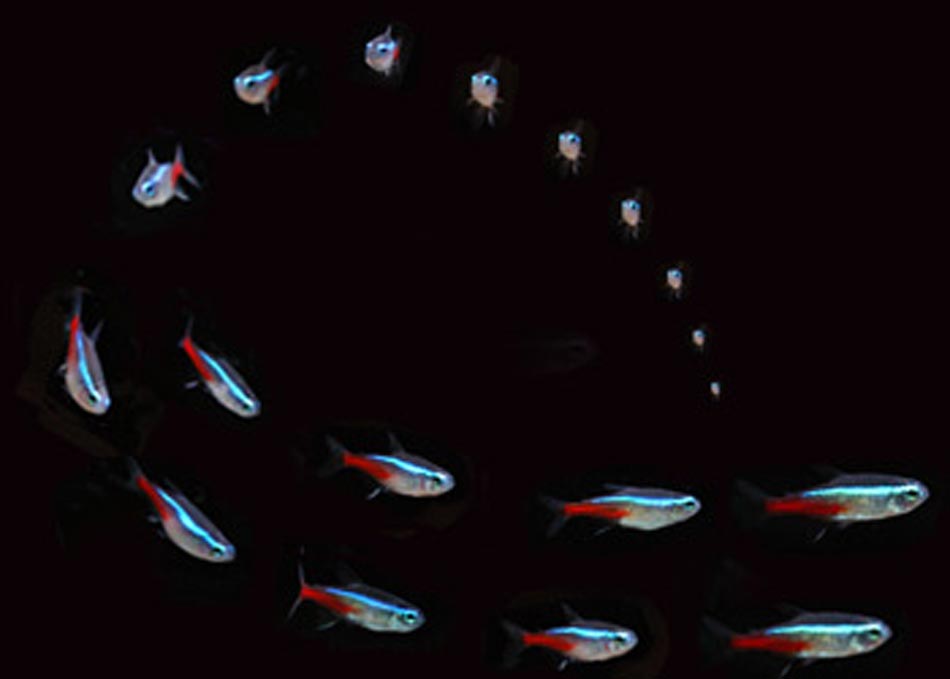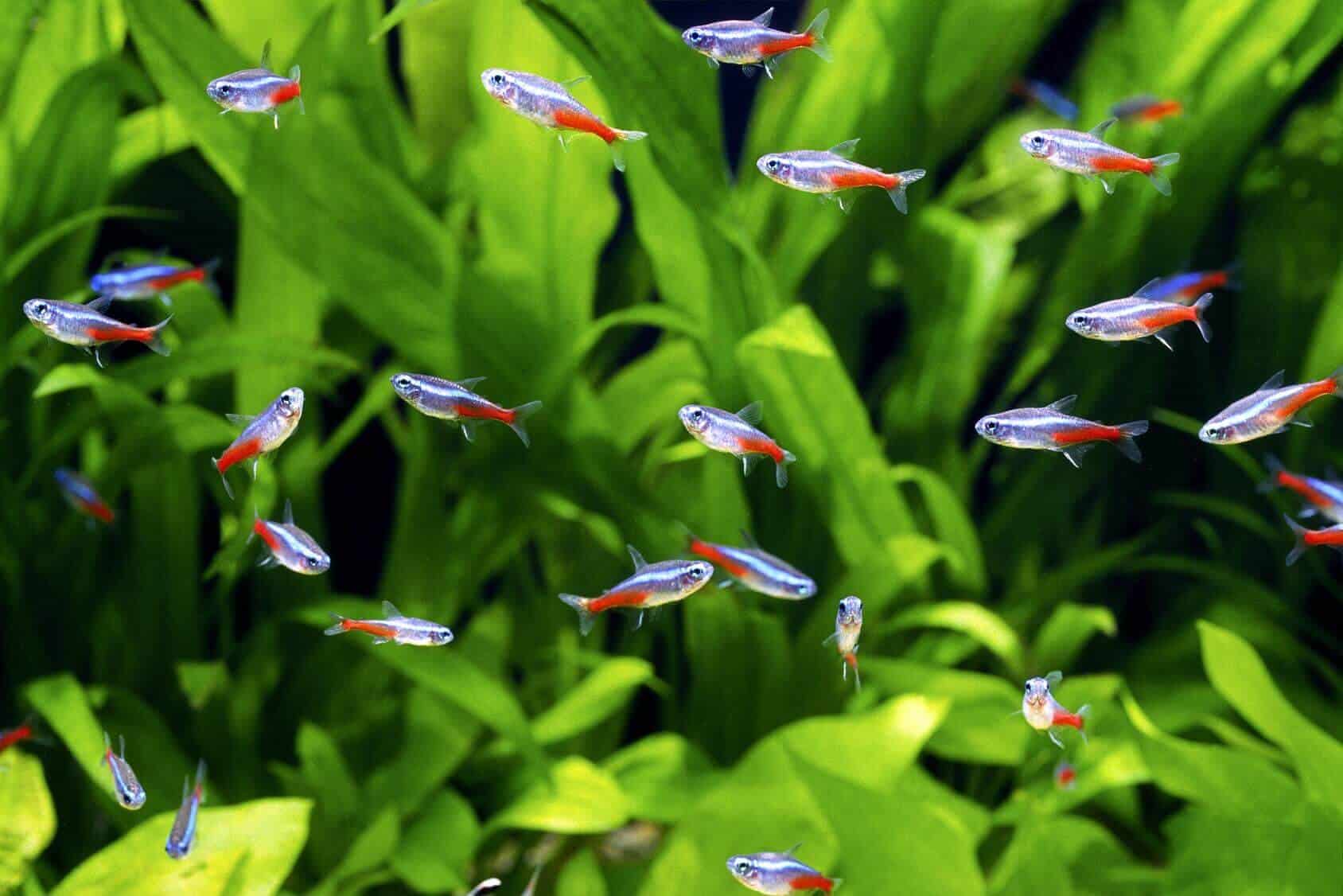
Neon tetras are very popular in the fish-rearing community, thanks to their ease-of-care and attractive colors. Use plant cover and a dark substrate on the aquarium’s sides and back. Since they inhabit areas with dense forests in the wild, you should maintain a dimly-lit tank. The Red Eye Tetra is known to be peaceful, and it will thrive in a community tank. The temperature can range between 73 to 82 ☏ with a PH of between 5.5 to 8.5. It will especially appeal to beginners because it tolerates different water conditions. It will generally reach a length of 2.75 inches, with a lifespan of three to five years. It was first described in 1907, and it inhabits the rivers of western Brazil, eastern Peru, Paraguay, and eastern Bolivia. The yellow band present at the base of the tail fin has earned it the name Yellow-banded Moenkhausia. The Red Eye tetra is noted for the bright red spot near its eyes, and the silvery-golden hue on its body.

Red Eye Tetra (Moenkhausia Sanctaefilomenae) Other tetra fish will make good tankmates as will Rasboras and Danios.Ĥ. Since it is a schooling fish, it is best to keep the Bleeding Heart Tetra in schools of four to six species. The tetra will generally occupy the middle and bottom areas of the tank, and it will only swim to the top if oxygen is not sufficient. The temperature should fall between 72 to 80 ☏ with the PH between 6.5 to 7.0. You will need a 20-gallon tank at minimum to keep the Bleeding Heart Tetra. It is sourced from the Amazon River Basin, as well as other river basins in South America. It is notable for the red spot on their sides, which have earned them the name Red-Tipped tetra. The Bleeding Heart Tetra is quite hardy, making it a favorite among beginning aquarists. Bleeding Heart Tetra (Hyphessobrycon Erythrostigma) The temperature requirements for the Congo tetra is between 74 to 82 ☏ while the PH should ideally fall between 6.0 to 6.5.Įnsure you keep at least six of the species together, and it is best to avoid aggressive tankmates that may bully the Congo tetra.ģ. Invest in a 40-gallon tank or larger to give the Congo tetra enough space to roam. You can achieve this setting by coupling floating plants with dim aquarium lights.

The Congo tetra will, therefore, thrive in dark and still water with low light. In its natural habitat, the Congo tetra favors slightly acidic water and tall vegetation as well as substrates consisting of mud, sand, and silt. It is one of the larger tetras, as it can reach lengths of three inches.īreeding the Congo tetras had mixed results after it was first discovered, but aquarists in Florida successfully reported a breeding line in the 1970s. Its body has green, blue, red, and yellow hues, and its scales are characteristically large. The Congo tetra is recognized for its radiant appearance, and it is sourced from the Congo River. The cardinal tetra will co-exist peacefully with other species including the other tetra species, dwarf gouramis, and danios.Ģ. Ensure that the chemistry is stable at all times. The fish will generally be easy to keep since they are rarely vulnerable to diseases. You can opt to have a planted aquarium with an open central region.īeing omnivorous, the cardinal tetra will eat most foods, but you should provide a lot of flake foods to satisfy their vitamin requirements. Ensure that your tank has an open swimming space in addition to several hiding places. The temperature should range between 73 to 80 ☏ with a PH of below 6.

It is a schooling fish, and you should, therefore, keep a community of fish in your tank. In the wild, the cardinal tetra prefers waterways covered by dense rainforests where the water is either static or slow-moving. It is indigenous to the South American countries of Venezuela, Brazil, and Colombia in environments like the Rio Negro tributary. The cardinal tetra closely resembles the more popular neon tetra. Most of the tetras will thrive in moderately warm tanks with strong water currents. Tetra species inhabit a range of habitats, from South America to East Africa, where they are sourced from wetlands, lakes, ponds, and rivers. Many aquarists love tetras for their peaceful nature, and how easily they can adjust to different kinds of setups. There is a rich variety of aquarium species available, and it can be tasking to narrow down the right ones for you.


 0 kommentar(er)
0 kommentar(er)
